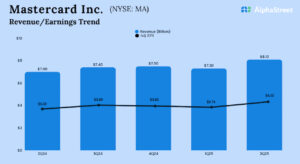
Image source: Getty Images
Even with UK shares reaching record highs in 2025, there are still plenty of cheap stocks for investors to look at. And some of these businesses are hiding in plain sight, with Melrose Industries (LSE:MRO) and Premier Foods (LSE:PFD) standing out from the crowd.
A critical aerospace supplier
Melrose has undergone an enormous transformation in the last few years, evolving from an acquisitive industrial engineering enterprise into an aerospace pureplay. In 2025, this transition’s in the final stages of completion, with a lot of accounting quirks that make it difficult to figure out what’s actually going on under the surface.
However, when stripping out temporary expenses and digging down to underlying earnings, we uncover a highly profitable, highly cash-generative business, trading at a price-to-earnings ratio of just 12. For reference, the industry average is closer to 30.
Right now, management’s targeting some impressive financial goals. If everything goes according to plan, revenue could reach £5bn by 2029 versus the £3.5bn achieved in 2024. At the same time, operating profits are expected to follow to £1.2bn at a 24% margin (more than double the industry average) with free cash flow growing to £600m.
Even when discounting these milestones with a healthy pinch of scepticism, Melrose continues to look like a dirt cheap stock. That’s why I’ve already added the business to my portfolio. However, I’m not blind to the risks.
As a top-tier supplier to companies such as Airbus and Boeing, growth and demand are highly sensitive to its customers’ build rates – something out of management’s control. Supply chain disruptions have also created several headwinds of late, which may only get worse if uncertainty in the geopolitical and macroeconomic landscape continues to rise. Investors will have to carefully consider both of these threats.
Another transformation opportunity
Melrose isn’t the only business undergoing surgery. Under new leadership, Premier Foods leveraged the surge in home cooking during the pandemic to mend the long-standing debt and pension problems on its balance sheet. Five years into this turnaround strategy and the financial position’s drastically improved.
Net debt’s dropped from 2.9 times EBITDA to just 0.7, free cash flow has doubled, operating margins are now the highest among its rivals, and growth’s been restored. Yet despite this progress, the shares still trade at a price-to-earnings ratio of 13.6. By comparison, its top competitor, Unilever, has weaker margins yet is sitting comfortably at 22.4.
In other words, Premier Foods’ impressive turnaround seems to have flown under the radar of most investors. Although, to be fair, the risks surrounding the business could also help explain the weaker valuation.
Management’s begun expanding into international markets with its flagship brands like Mr Kipling. While that opens the door to more growth, it also introduces foreign currency exchange risk and, more importantly, execution risk. International expansion’s an expensive endeavour that could distract management from its crucial core UK market, creating opportunities for rivals to steal market share.
However, these risks may be worth taking, considering how cheap the stock appears to be today. That’s why I think investors may want to mull over this opportunity as well.



